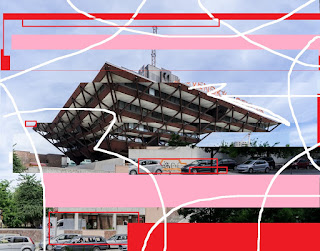Know Problem// No Problem
Know problem
Or
No problem
What is a problem or what is THE problem?
Do problems exist in nature or do we just create problems
out of things that we think need to be fixed or right? Of course there are real
issues in the world, but why are we so eager to go towards a solution? Trying
so hard to find a solution distracts us from the the root of the problem in the
first place. What can we even know about a problem that we think has an easy
fix or answer? Well the answer might surprise you seeing that there might not
be one. At least not one in a nice package or a xl spreadsheet.
There are costs and benefits for every action. This is an
interesting thing to observe. It can shift us out of the problem solution
paradigm. If we are able to break from the constant need or trying to solve
problems then we can see that the answers lie within the thing we construct as
the “problem” itself. There will always be consequences to every action. It is
not a closed loop, but a process that seemingly can go on forever. Consequences
producing actions and actions producing consequences.
Problems
require the possibility of an end. The ends are manufactured. This is part of
the paradigm.
Solving one problem creates more problems in the future.
There is not an end per say. Problems get notched onto a list of things for us
to conquer. The critical thinking in solving problems is beneficial, but if we
use that energy inefficiently or ineffectively, then what good does it do for
expanding our awareness? What good does it do for us as a whole? Does solving
problems liberate us from our own foolishness and unconsciousness? In what ways
are we challenging the thinking patterns we have fallen victim to from the
past? To know a problem, is to know why we are seeing it as a problem in the
first place.
How
much of solving problems requires the act of domination?
Why are we so eager to act on trying to solve a problem? How
was it created? Aha! The source.
Finding the source is the key. (But not an answer.) If we see the problem as an
imaginary tree then we can attempt to see what is at the roots. The tree would
have started as a seed to begin with and would require a cocktail of
environmental factors to make it grow. What is the thing that we can see as
wrong and what happens when we don’t immediately try to resolve it? It’s hard,
at least that is what we think. It’s hard because we have been taught to put
things in what we think is order out of chaos. Then we create the potential for
more chaos or uncertainties in the future. Well, the uncertainties will always
be there, but we can learn to observe from where they are coming from.
Uncertainty may beget uncertainty, but certainty does not beget more certainty.
If anything it creates more confusion, division and strengthening of the illusory
self. This is a part of the Problem Paradigm.
So let us look at our “life” problems. Are they really
problems? How much of them are the mind creating things out of thought? How
much of it stems from not being present? In what ways are these so called problems
contributing to our growth and expansion of consciousness? How much of these so
called problems are manifested from us trying to take what is and turning it
into what we think should be? Do
these problems exist in the realm of what is? The answer is no. Problems rely
on a perception. A perception has a filter and a distortion of what actually
is.
We
create narratives around problems. We bring them into being. We then believe
these “stories”. It reduces the world into something we can try to grasp and
understand.
Each problem comes with a story where we place ourselves as
one of main protagonists. We may employ the help of others, but deep down
inside we can feel the duty to solve the problems. Like a detective on a hot
case, we take our attention and apply it to what we think needs to get done. We
create a journey that teeters around the unknown. This strengthens the goal
seeking behavior of the mind. We get the natural high from completing tasks. It
engages out internal circuitry like we are on the hunt for food for ourselves
and the tribe. (The food and tribe being both metaphorical and literal. )
We are hunters. We came from hunters and gatherers. Tribal
units of cooperating individuals. Back then our so called problems were more
primitive and focused around the arena of survival. Our eyes evolved more
keenly to spot predators and prey. Eyes in the front. Imagine being a hunting
person keenly looking for anything that would resemble food whether it be
animal, vegetable or fruit. The survival fight or flight drive led us into
looking for ways to solve the problem of eating and surviving. Our bodies
evolved more efficient to accomplish greater things for us to survive and
ultimately stay alive long enough to reproduce. These are all essential stories
of our evolution. The stories so far....
So we crafted tools to solve problems more efficiently and
effectively. Necessity sure is the mother of invention and the drive to survive
has crafted our minds into getting better at surviving.
This is where memory takes place in problem solving. We
learn from our mistakes and what we see from the past. We imitate. We follow.
Sometimes we make the conscious choice to lead even if we do not know fully
what we are doing. This is that classic narrative of the Hero’s journey. The
journey from the known to the unknown. That is what problem solving is centered
around. Seeing a problem is the first step in attention and awareness and going
about solving it requires the self which is the product of the past. Sometimes we
act from a more reasonable center and other times we go with that gut instinct.
We think we are more rational creatures than we actually are. In reality we
rationalize our behaviors after the fact
rather than consciously planning it out beforehand.
We are
not rational creatures. We re rationalizing creatures.
What happens when we surrender the need to resolve
something? Do we become anxious? What does it feel like? If we take that
concept of surrendering and just simply letting go of the need to solve
something, where does our attention go? Yes, that’s the word. Does the problem
dissolve or magically go away? Do we see what we saw as a problem beforehand as
something else? If we stop placing our self within the idea of the problem then
we can start to see more clearly. We can put down our hunting centered mind and
really just observe what we thought was the problem in the first place. When we
let go of the urge to complete something and not give in or resist it, what
happens?
We put so much emphasis on focus and “undivided attention”
that we tend to look past the fact that both of these things require the
division or elimination of something else. The act of focusing requires a sense
of will and effort. It requires the ability to not get distracted. It requires
one to look and do something within one line of thought. This act ironically
can not see something in its totality. It requires a filter and an end. A
convenient distraction.
This new sense of seeing does not require an end or a goal.
It may see the root cause even more clearly. It may get rid of our conditioning
to simply complete something. It’s all about finding out for yourself, but not
for your “self”. This is where creativity and awareness arises. You are the
searching and the searcher creating a game of resistance. You can abandon
methodologies and past ways of doing things to discover a freshness of
awareness and action. Doors can open up when you do not have a plan to
alleviate a problem. The problem might present itself right before your own
eyes without the need for rules or self centered effort. The solution rests in
the problem itself.
It’s
not about directing thought. It’s about looking at thought. Not thinking about
thought.
Questioning a so called problem will allow for the mind to
wander with a new sense of aliveness without struggle. Much like mediation,
paying attention to what your mind is doing and how it reacts and acts is key
in expanding awareness and breaking away from the limits of the self without
any willpower or effort. When you do not identify with the thoughts, you can
see the inner workings of how the mind works. The thoughts. The spaces between
the thoughts. The emergence of creativity and awareness.
The
___________ spaces. .
When you stop seeking, you can start to listen and from that
listening comes a freshness of understanding without trying to attain a goal,
mood or means to an end. Then you will see how these so called problems were
created in the first place. They were all tied to the past and the compulsory
nature of thought itself.
The
problem is the separateness. Or is it? Can it ever be so simple? Ask yourself
without looking for an answer. Just listen.
The problems are created in thinking we are separate from
them. Once we label something as a problem, the separation is created. The wall
is built and we lose in understanding why it is there or manifested in the
first place. The problem and problem solver are created and separated thus
creating division and conflict. When that happens we get caught up in the limit
of thoughts and the past. We move towards the ideal and away from what is. The
ideal becomes a distortion.
To illustrate:
The Problem
The Solution
There is a space between these two concepts. Some may call
this the process. The journey. The ride. You can call it whatever. That is not
the importance. The importance is seeing this space. There is no need to define
it. To define is to limit. We can see how this may create more problems. But
wait. Does that create more problems? You can see the rabbit hole that this
could create.
We must look into the WHY of the situation. Why do we create
these problems? How much of it deals with our conditioning? How much of it
deals with the self which is product of the past? How much of it is us
compensating for some type of void in our lives? What are we reflecting when we create
problems? How much of these created problems rely on our so called
insecurities?
So to know a problem is to not try to solve it. The answer
or solution appears when we are present and aware of the “Why” in the first
place. We have fallen hard for this paradigm in the past and there is something
revelatory about seeing why we create problems.
Know problem // No problem.
DG



Comments
Post a Comment